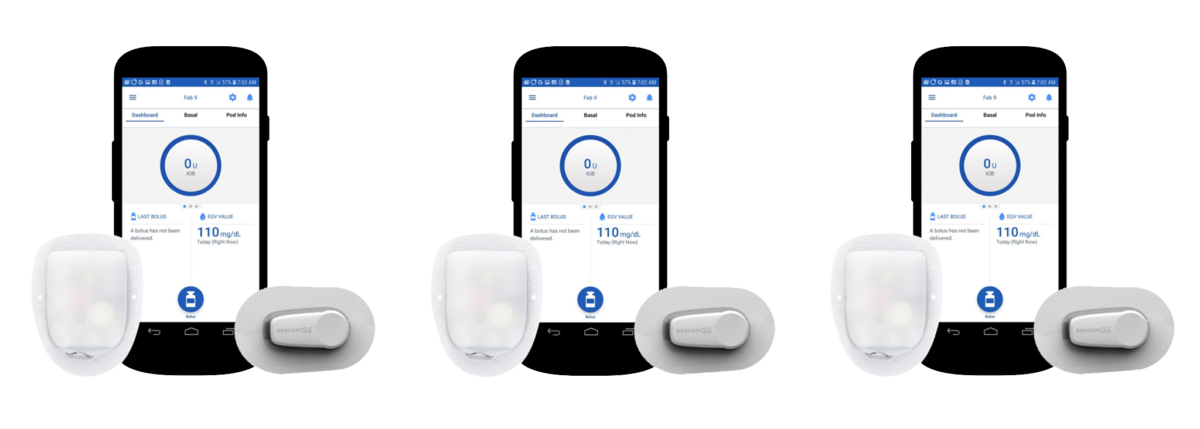FDA Approves First Ready-to-Use Liquid Stable Glucagon Gvoke
Written by: Jordan Dakin
2 minute read
September 10, 2019
On September 10 the FDA approved the Gvoke HypoPen and Gvoke PFS, emergency glucagon rescue devices for the treatment of severe hypoglycemia.
Editor’s Note: Xeris Pharmaceuticals is slated to host a conference call today at 12:30 pm ET. Beyond Type 2 will update this breaking news as more information becomes available.
On September 10, the U.S. Food and Drug Administration (FDA) approved the Gvoke HypoPen, an emergency glucagon rescue treatment for severe hypoglycemia. The device from Xeris Pharmaceuticals contains a room temperature, liquid-stable form of glucagon that is auto-injected when pressed against the body, similar to how an EpiPen works to treat severe allergic reactions. GVOKE is formulated for use in patients over the age of two and can be administered by caregivers in emergency situations of hypoglycemia.
Once administered, the glucagon works to rapidly increase blood glucose levels by stimulating the liver to release accumulated glucose into the bloodstream. Also approved was the GVOKE PFS, a pre-filled syringe with the same liquid-stable form of liquid glucagon found in the HypoPen. Both options will be available in two doses: a 0.5 mg/0.1 mL dose for pediatric patients and a 1 mg/0.2 mL dose for adolescents and adults.
“This milestone is a positive step forward for the diabetes community as the first pre-mixed, pre-filled and pre-measured liquid glucagon to effectively treat severe hypoglycemia in both adults and children with diabetes,” said Paul R. Edick, chairman and chief executive officer of Xeris Pharmaceuticals. “We are actively preparing to introduce GVOKE in two different administration options to accommodate the community’s preferences starting with our pre-filled syringe in four to six weeks and the auto-injector in 2020.”
For decades, a Glucagon emergency kit had been the only FDA-approved way to administer glucagon in cases of severe hypoglycemia. However, injectable glucagon was not previously not liquid-stable at room temperature and therefore required mixing a powder and liquid with a syringe, which can be intimidating and prone to user error in emergency situations.
“Until now, many people may have been hesitant to use conventional glucagon kits because the complex preparation felt confusing and perhaps overwhelming. With GVOKE as a new glucagon option, we gain an easy to use and effective solution to a dangerous and stressful event,” said Jeff Hitchcock, founder and president of Children with Diabetes.
FDA approval came after positive results from Phase 3 clinical trials comparing the use of GVOKE to conventional glucagon rescue kits in situations of severe hypoglycemia in both children and adults. These trials saw a 100 percent treatment success rate in children, and a 99 percent success rate in adults.
These new, liquid-stable glucagon kits from Xeris represent the second approval of next-generation glucagon in the past two months. In July, the FDA approved the first non-injectable form of glucagon, BAQSIMI. The rescue device from Eli Lilly is a powder form of glucagon administered into the nose, and comes in a single-use dispenser.
Although the HypoPen and pre-filled syringe (PFS) are currently only approved to treat severe hypoglycemia, a liquid-stable form of glucagon opens the door to approval for a wider range of future use cases for the drug. Edick told Beyond Type 1 earlier this year that the company was looking at the potential for their product to treat both exercise-induced hypoglycemia and post-bariatric surgery hypoglycemia.

Author
Jordan Dakin
<a href="https://beyondtype1.org//leadership/jordan-dakin/">Jordan</a> recently graduated from the University of California, Los Angeles after earning her BA in English and Film Studies. She is a passionate storyteller, traveler and lover of people and hopes to use her experience working in tech and as a writer to advocate for the BT1 community. In her spare time, she also enjoys hiking, karaoke and cooking for friends. Check her out on Instagram: <a href="https://www.instagram.com/jordanemilydakin/">@jordanemilydakin</a>.
Related Resources

Already compatible with Dexcom’s G6 and G7 continuous glucose monitors (CGMs), the Omnipod 5 Automated...
Read more

The younger a person is diagnosed with type 2 diabetes, especially those with obesity, the...
Read more

The Oura Ring, which tracks things like sleep, heart rate, and activity, is joining forces...
Read more

